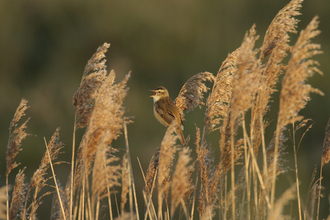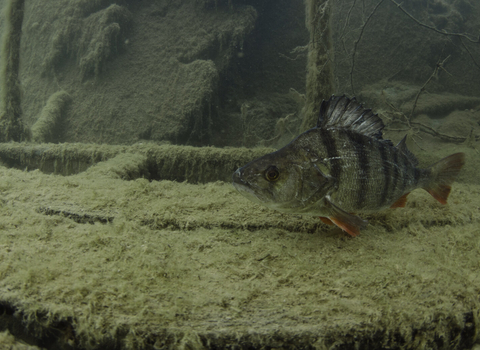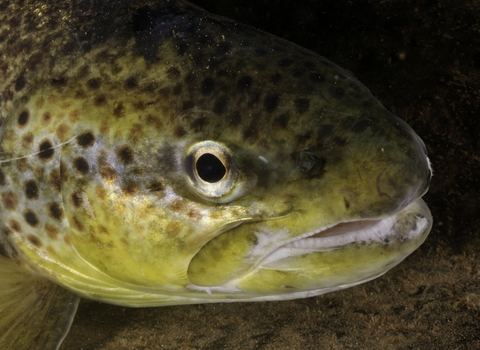
Brown Trout (Salmo trutta) (c) Linda Pitkin/2020VISION
Freshwater fish
There are three types of fish, saltwater, freshwater and those that can tolerate both states, such as Atlantic salmon, eels and Brown trout.
About 15,000 years ago the ice sheet that had bound northern Europe began to retreat and as the freshwater rivers and lakes began to move again, fish made a bold return.
Since then man has played his part in introducing exotic and sadly harmful continental species into the British Isles. Introductions have been made for food, angling or conservation reasons.
Of the 174 fish species now living in Britain and Europe, 22 are introduced and 152 are native, of these 42 are endangered.
Being a fish is a risky adventure!
Fish have evolved in a unique way to absorb oxygen, inhaling water over gills, taking up the dissolved oxygen before discharging the water back out. Excesses of pollution reduces oxygen leading to catastrophic fish kills.
Sediment pollution from soil or road run-off can clog spawning gravels, coat food sources, make hunting difficult. Large industrial pollution incidents kill millions of fish and the effects can be passed rapidly up the food chain to affect birds of prey and otters.
River systems have been modified for power generation, navigation and water supply. Weirs have become impassable obstacles to migratory fish. Much work is now being done to install fish passes to allow passage for weak swimmers such as the Twaite shad.
Upland streams and small gravelly rivers
Our upland stream is a fast, oxygen rich pattern of pools and riffles with few plants and low in nutrients.

Brown Trout (Salmo trutta) (c) Linda Pitkin/2020VISION
Brown trout, small, pretty and ace swimmers rest up in the pools, shelter under woody root systems and during October search out clean, loose gravels for their egg laying.
Up here young salmon may lurk and grayling flash by with their sail like dorsal fin. Fish here point upstream fetching out scraps as they are brought down by the flow or picking off nymph or beetle larvae unwise enough to make a move in the clear waters.
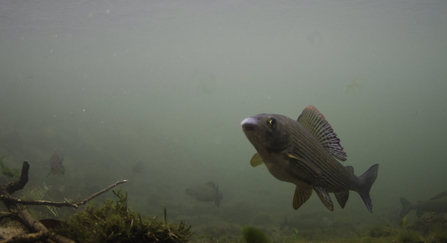
Grayling (c) Jack Perks
Middle river reaches
As turbulence decreases the river widens, the pools on the outside of meanders deepen, with an increasing amount of silt deposited which when above the normal surface becomes vegetated.
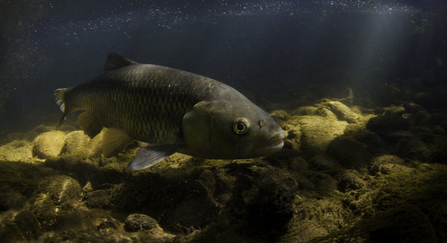
Chub (c) Jack Perks
Chub lurk under the shade of riverside trees, shoals of minnows rush recklessly across the shallows of the softer edges of the river. Dace stay further out in their silvery schools.
Bullheads can still be found lurking under their home cobble. Less frequently Stone loach can be seen, though the nutrient levels are now rising and water is more prone to turbid murkiness.
Lower river
Broad, slow reaches of water, fringed with river side willows, deeper pockets of water barely given away by mild swirls on the surface are all characteristic of the lower river.
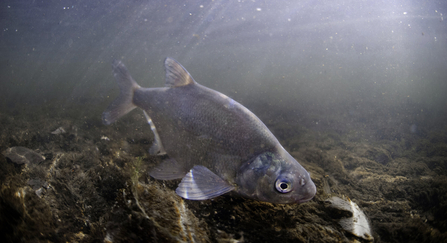
Bream (c) Jack Perks
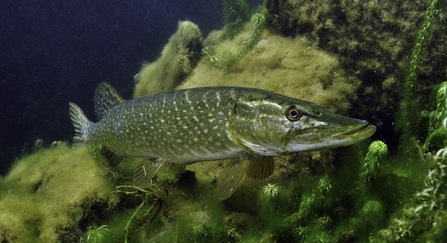
Pike (Esox lucius) (c) Linda Pitkin/2020VISION
Atlantic salmon and Brown trout may pass through heading to the spawning grounds or back out to sea. The trout and salmon are anadromous, meaning they move from sea to freshwater river, the Sea Trout is merely the blue-silver river trout just returned from the sea.
Pools, Meres and Canals
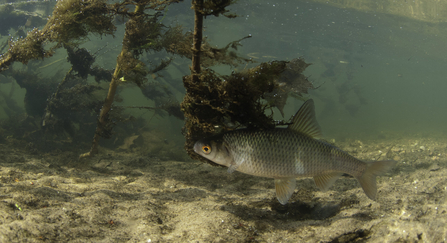
Roach (c) Jack Perks
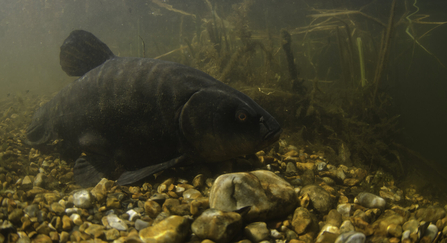
Tench (c) Jack Perks
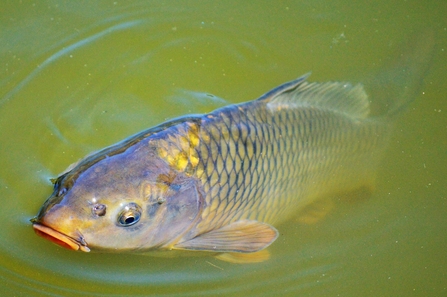
Carp have been introduced into many pools, they are popular with anglers and can reach very large sizes being quite long lived. Other introduced fish species include the Zander and Bitterling, one an aggressive predator, the other much smaller with a unique breeding system that involves a flexible ovipositor to lay eggs inside freshwater mussels.
External resources
Angling and fish conservation links:
Angling Trust
Wild Trout Trust
Salmon and Trout Conservation
River Anglers Conservation Group






